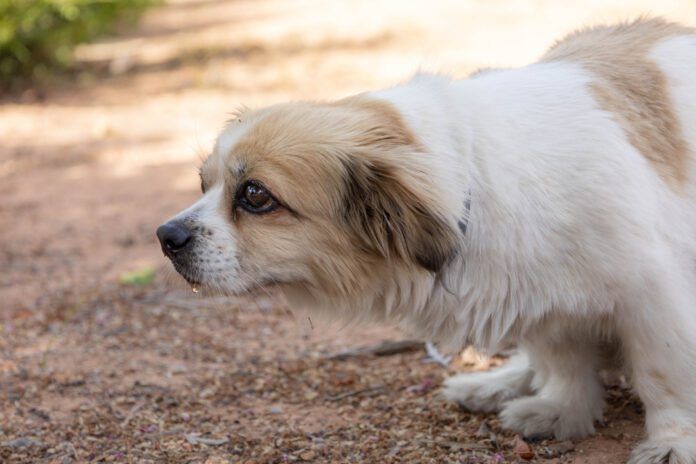What to give a dog for constipation at home depends upon how bad the constipation case is. If you suspect your dog is constipated, start by looking at your dog’s anus. Make sure your dog is not suffering from “external constipation,” which happens in long-haired dogs when soft stool collects in the hair around the anus, eventually forming a “plug” which prevents passage of stool, no matter how hard your dog tries. Clean up if necessary.
A dog in pain needs to be seen by a veterinarian. Your dog needs to be seen by a veterinarian if he has:
- Constipation with no bowel movement for three days.
- Constipation with pain when trying to defecate, which may be expressed by pacing, circling, crying, hiding, sudden sitting, and looking/licking back at the anus.
- Constipation with vomiting.
- Constipation with loss of appetite.
What to Give a Dog for Constipation at Home
If the anus is clear, the dog is not in pain, and it has been less than three days since his last bowel movement, you can consider these dietary interventions:
- Feed canned food with water added to super-hydrate your dog.
- If you are not already, add canned pumpkin to your dog’s meals (small dog 1 tbsp; medium dog 2 tbsp; large dog; 3 tbsp).
- Ask your veterinarian if it’s OK for you to try coconut oil or olive oil and how much to give your individual dog.
Prevent Constipation
If your dog has ever had to have constipation relieved by a veterinary professional, these preventative measures for you:
- Weight loss for overweight dogs: Overweight dogs have a much harder time completely emptying their colon when they have a bowel movement. They often have a hard time holding their pooping posture long enough due to joint pain or poor fitness, and their abdominal push is typically weaker.
- Hydration: Dehydration results in drier, harder stools that are harder to pass. If your dog is not a good water drinker, try adding water to his meals and maybe even some canned food which has more moisture than kibble.
- Exercise: Increased activity and better fitness overall helps keep the colon healthy and helps dogs move their bowels more fully every time they defecate.
- Probiotics: These are the good bacteria the gut needs to function properly. A happy colon empties better.
- Prebiotics: These are really just fiber sources. The fiber is the “food” the good bacteria in the gut require to be fruitful and multiply. Fiber also helps form healthy poop that is easier to pass and keeps the colon happy. Pumpkin and psyllium powder are the most popular fiber sources for dogs.
- You can try the feline hairball treatments available over-the-counter (OTC). These are both lubricating and laxative.
- You can try the human OTC laxative called Miralax (polyethylene glycol 3350). This works by pulling moisture from the body into the stools to soften them and make them easier to pass. Ask your veterinarian how much to give, which will typically be between 1/8 to 1/2 teaspoon per meal depending on the size of your dog and your dog’s history.





